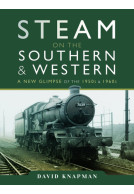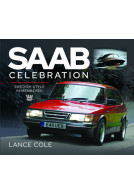Allied Railways of the Western Front - Narrow Gauge in the Ypres Sector (Hardback)
Before, During and After the First World War
Imprint: Pen & Sword Transport
Series: Narrow Gauge Railways
Pages: 264
Illustrations: 160 colour & black and white & maps illustrations
ISBN: 9781526788818
Published: 5th March 2024
(click here for international delivery rates)
Need a currency converter? Check XE.com for live rates
| Other formats available - Buy the Hardback and get the eBook for £1.99! | Price |
|---|---|
| Allied Railways of the Western… ePub (39.2 MB) Add to Basket | £16.99 |
The Ypres sector of the Western Front was held predominantly by the British and Dominions Armies from 1914 to 1918. The Ypres Salient, at the centre of this sector, was one of the most intensively fought over single locations of the First World War. By the end of 1917 the sector was full of railways, dumps, camps, and other facilities. Much was lost in the German advance in April 1918, but from September 1918 the German Army was driven eastwards until the Armistice.
Although Ypres and most of the forward areas are in Belgium, much of the support area is in northern France. In this book the metre gauge networks of both countries established before the First World War are examined, with their uses and extensions during the War. The build up of light (60cm gauge) railways from 1916 to 1918 is described, with an assessment of the contribution of both narrow gauges to the war effort.
After the war the light railways in this sector were generally used only for short term clearing up and salvage. The metre gauge railways in Belgium were rebuilt or repaired. Those in France had been less affected. The story is followed to the closure of the last of these railways.
This book is a companion volume to those on the Arras Sector (2015), and the Somme Sector (2018). It refers to other previous works on British, French and Belgian railways, especially during the First World War, but contains sufficient information to stand alone.
"A very complete work with a good iconography".
Voie Etroite - October - November 2024
This work, the third volume in a series covering Narrow Gauge Railways on the Western Front, maintains the detailed research and excellent production standard of the earlier companion volumes: Narrow Gauge in the Arras Sector (2015) and Narrow Gauge in the Somme Sector (2019). It is fair to say that all three volumes are stand alone, superb examples of the genre of transport history which reflect the dedication and effort of the authors in assembling such a corpus of knowledge about a key support network for the armies on the Western Front.
The Wessex Branch of the Western Front Association
This work alone is a significant addition to the historiography of WW1 and is an excellent source of knowledge for the understanding of the importance of the rail networks in supporting the Allied armies on the Western Front. It goes without saying that to have all three volumes will give those who study the Great War a marvelous repository of information that without these works would be soon forgotten. Very highly recommended.
"The third of a series on Allied railways of the Western Front during the First World War, it follows previous volumes on the Arras sector published in 2015, and the Somme in 2018. It is a worthy addition but be warned - Chasing Steam in 1966 you’ll need a long time to read them all in one sitting!"
Steam World - June 2024
"This thoroughly researched, well written and well produced book will be of great value to anyone interested in this role played by light and other railways in the First World War, who want greater depth than more generic sources can provide. The context it gives of the existing metre gauge railways and tramways that served, and continued to serve, this region of northern France and Belgium, will also make it of great interest to anyone with a wider interest in narrow gauge and light railways."
French Railways Society Journal - September 2024
This book is a neat A4 hardback which makes an impact right at the start with its cover illustration, a watercolour in sombre colours suggestive of weariness and fear. A tired-looking diesel shunter hauls a train in reverse along a haphazard single track towards a forbidding town under a leaden sky. The landscape is leafless and scarred by the damage of warfare and hasty tracklaying. A squadron marching behind and alongside the train reinforces the military context, confirmed by the very clear W↑D marking on the train’s first wagon which is laden with explosives.
The British Overseas Railways Historical Trust
The authors have covered similar ground in their companion books about the Somme and Arras sectors of the long WW1 struggle in the France-Belgium frontier zone. Here they deal with the Ypres sector (IEPER in Dutch) still further north. The relatively short four-year impact of the war is given helpful background by a potted regional history reaching back to Roman times and a very full explanation of the pre-war railway scene. Post-WW1 detail, no less informative, takes the reader to 1954 in French Flanders and right up to 2022 in Belgian West Flanders. The military presence at Ypres is generally described as British but included troops drawn from Australia, New Zealand, Canada, South Africa and India.
The title suggests a totally narrow-gauge story and much of the mileage laid was in 2-feet or metric near-equivalent, but there are two early chapters given over to pre-war metre gauge after an explanation that the authors, like most of us, consider metre-gauge as “narrow”, which was not the fashion in 1914. Standard gauge appears frequently, both in some of the military trackwork and of course in some civilian main and branch lines, 22 of them already in existence as the war started.
Surviving photography from the period covered is, not surprisingly, in black and white so that occasional lack of clarity has to be accepted but any loss on that account is probably outweighed by the number and content of photographs included. The illustrations often tell as much about the troops, their placements, activities, clothing, comfort (or not) and equipment as about the railway content. Colour is used effectively on some diagrams, grouped in the centre, which show very clearly where the different lines ran, their origins and gauges, and their relationships to the different battlefields, encampments and civilian infrastructure. Some are station layout diagrams.
The last chapter, of nearly 30 pages, describes helpfully what remains of the Ypres wartime railways and how the reader can visit the locations. There must surely be supporting colour photography available but it is understandable that the printing is in black-and-white to reduce the cost.
This book is certainly recommended to anyone with an interest in the construction and day-to-day upkeep of ad-hoc railways or in the military context of Ypres. The narrative style is attractive and supported by a good 7-page index. The wealth of detail conveyed in tables is astonishing. Just one of these, Table 7.9 on page 127, gives so much detail of the activities of a Canadian contingent at Bollezeele in only 3 months (Jan – Mar 18) that the authors appear to have been encamped at the location throughout and kept a 24-hour watch.
Review as featured in
Gun Mart Magazine
Highlight: 'This work, with its precise information of locations, will be of interest and great use to railway enthusiasts and anyone visiting the battlefields.'
"...if you want to appreciate the railway infrastructure developed to support a massive war of attrition this book is well worth reading."
Industrial Railway Society Bulletin 1126, May 2024
"Overall, a valuable work on a fragment of the history of that dreadful conflict."
National Railway Museum Review – The Journal of the Friends of the National Railway Museum – No187, Spring 2024






















